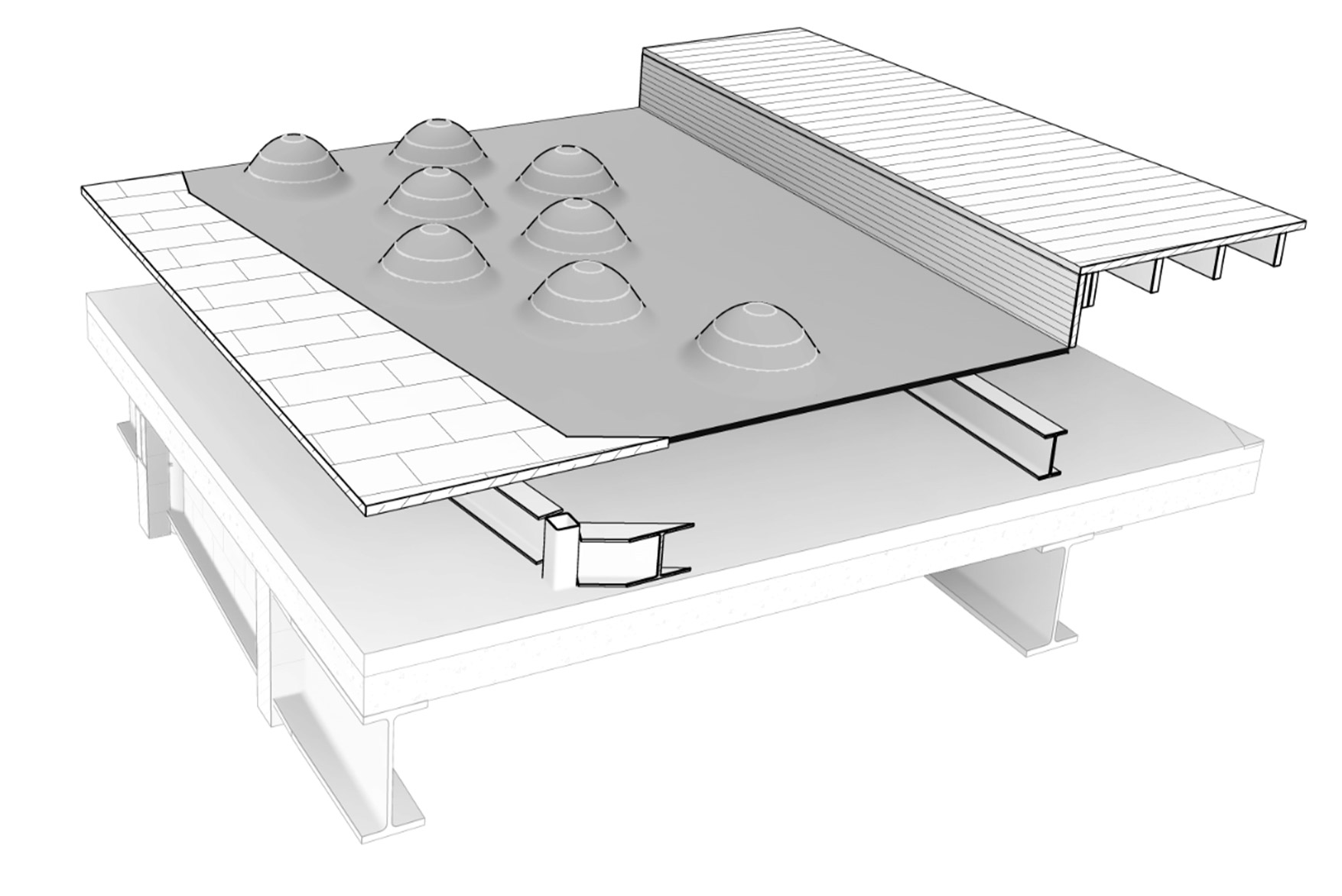Boffa Miskell landscape architects were contracted to develop a plaza design to the north of the new archives building. Through a co-design process led by Rangi Kipa of Tīhei Ltd, the collaboration of Boffa Miskell’s design and technical expertise, together with the authority of Mana Whenua, integrates identity and narratives into the landscape.
The design takes a deep dive into the whenua, stepping down toward the building entrance, challenging those who move through the space to become aware of the land they are moving through. A datum runs across the site at ground level, continuing into the building. Above is revealed as Tuanui (a vessel levitating above the land) – light, elevated and cosmic, while below is Tūāpapa (a foundation) – deep profound and encompassing.
The design references the pā site, with references to the original pipi beds, gardens and kumara mounds that supported the once-extensive Pipitea Pā. Timber terracing reminiscent of rocky outcrops, 4m high timber wind screens with stratified texture, echoing layers of earth and pipi shells within a midden, and smaller wind screens to create comfortable pockets of space that take cues from traditional fencing used to protect crops. Undulating, playable surface reveal the form of kumara mounds in a traditional plantation. The connection to the past use of the site affirms tuawhenua (mainland) as a place that is life giving - he waahi oho, he waahi mauri-ora.
One of the most unique aspects of the project was the technically challenging site, with the plaza sitting on top of a basement roof. The structure had to meet strict seismic requirements and avoid placing too much weight on the roof, all while ensuring the basement remained waterproof.
An extensive substructure is used to support the plaza's design. The technical complexities of the project were aided by using BIM for 3D modelling and accurate coordination with the wider project design team. Working in a digital environment throughout the design and construction has supported communication, collaboration, and coordination and enabled goals for resilience, sustainability and efficiency to be met.
Created with a human scale and tactile quality, the plaza space provides opportunities for people to meet and engage with each other and the building itself. By expressing the presence of the Indigenous Māori community. Heke Rua is a reminder of the people who once lived on this site, Pipitea.
Heke Rua Archives is set to open to the public mid-2026
Learn more about the project and the co-design process. Watch a video here.




